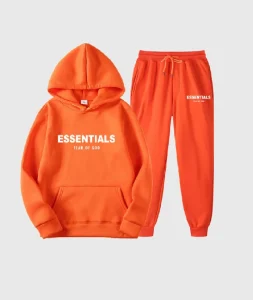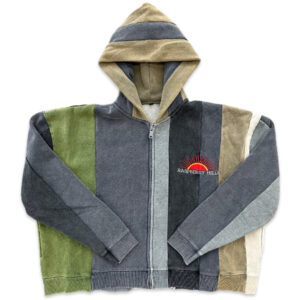If you’re in the construction or fabrication world—or just someone who’s ever browsed steel products at your local supplier-you’ve probably come across Rectangular Hollow Section, or as the cool kids (and the industry) call it, RHS.
You might’ve thought: “Why’s everyone using this?” Well, you’re not alone. RHS has quietly become a favourite among tradies, engineers, and even DIYers. And once you get to know it, it’s not hard to see why.
Let’s break it down—where RHS is used, what makes it so useful, and why it might be the low-key MVP of your next build.
What Exactly Is RHS?
Think of RHS like the steel version of a sturdy lunchbox—flat sides, closed structure, and solid strength. It’s a tube-shaped steel product with a rectangular cross-section, made from mild steel or sometimes higher-grade alloys.
The hollow core makes it lighter than solid steel, while the angular shape gives it stability and versatility. It’s kinda like the Swiss army knife of structural materials—only heavier and way less likely to fit in your pocket.
Real-World Applications of RHS (That You’ve Probably Walked Past Today)
If you’ve ever sat on a bench at a bus stop, walked through a commercial gate, or parked in an industrial warehouse—you’ve met RHS.
Here are just a few places where it’s doing its quiet work:
1. Structural Framing
Used in buildings, sheds, warehouses, and large-scale industrial structures. RHS can take a beating and still hold up the weight of walls, roofs, and machinery.
2. Furniture and Fixtures
Yes, RHS is showing up in interior design too—especially in modern, industrial-style furniture. Tables, bed frames, benches—it’s all about that clean, strong look.
One Reddit user in r/DIYAustralia shared, “Used 50×25 RHS to build a kitchen island frame. Strong as an ox and doesn’t even flex with granite on top.”
3. Gates, Fences, and Outdoor Structures
RHS is a tradie’s go-to for gates and fencing. Why? It’s easy to weld, super straight, and can take weather like a champ (with the right coating).
4. Transport and Trailer Fabrication
It’s commonly used in trailer chassis and framework. It’s strong without being unnecessarily heavy-ideal for keeping things road-safe and fuel-efficient.
Why RHS Is So Popular Right Now
1. Strength-to-Weight Ratio
Because it’s hollow, RHS gives you solid strength without weighing a ton. That means less muscle strain on-site and less stress on supporting structures.
2. Clean, Uniform Finish
With flat surfaces and sharp corners, RHS is easier to align, cut, and weld compared to round or irregular shapes. That means less faffing about on the job site.
3. Cost-Efficient
You get structural performance without overpaying for excess steel. And with rising material costs (yes, we’re looking at you, 2024 inflation), builders are leaning more on RHS to hit the sweet spot of performance and price.
According to a Construction Review Online article, RHS has become one of the most cost-effective options for structural fabrication, especially in commercial builds.
But Is It Always the Best Option?
Here’s where things get real. While RHS is versatile, it’s not always the answer.
- For very heavy loads, solid steel bars may still win out.
- For decorative finishes, round tubing or stainless steel might look sleeker.
- And for marine or chemical environments, RHS will need galvanising or other protective coatings—or it’ll rust faster than you can say “mild steel corrosion.”
And look, I’m not pretending to be a structural engineer. You should absolutely consult one if your project involves critical load-bearing elements.
Tradie Tip: Start with the Job, Then Choose the Section
Before heading to your steel supplier (like the legends at Harding Steel), ask yourself:
- Is this structure staying outdoors?
- Does it need to support weight?
- Do I need clean lines or curved aesthetics?
- Will it be painted, powder-coated, or left bare?
Once you answer those, RHS might just pop out as the obvious choice.
What’s Next for RHS?
As the demand for faster, smarter construction rises, RHS is likely to get even more popular. Some trends to watch:
- Pre-galvanised RHS – reducing time and costs on site.
- Lighter composite variations – mixing materials to offer better resistance and lower weight.
- Sustainable sourcing – more manufacturers are using recycled steel in RHS production to reduce environmental impact.
There’s also buzz around modular construction, where pre-fab elements (often made with RHS) are trucked in and bolted together on site. It’s quicker, cleaner, and less labour-intensive-making RHS even more attractive.
Final Thoughts: RHS Is Quietly Running the Show
You might not think much about a rectangular piece of steel, but in the world of modern construction, it’s everywhere—and for good reason. It’s versatile, strong, easy to work with, and plays nicely with nearly every type of project you can imagine.
So if you’re deciding what to use for your next gate, trailer frame, or even furniture build—don’t overlook RHS. It might not shout for attention, but it’ll quietly hold up whatever you throw at it.
And as building trends shift toward efficiency, durability, and aesthetics, you can bet RHS will keep its spot as the go-to section—until something better comes along (but we’re not holding our breath just yet).





